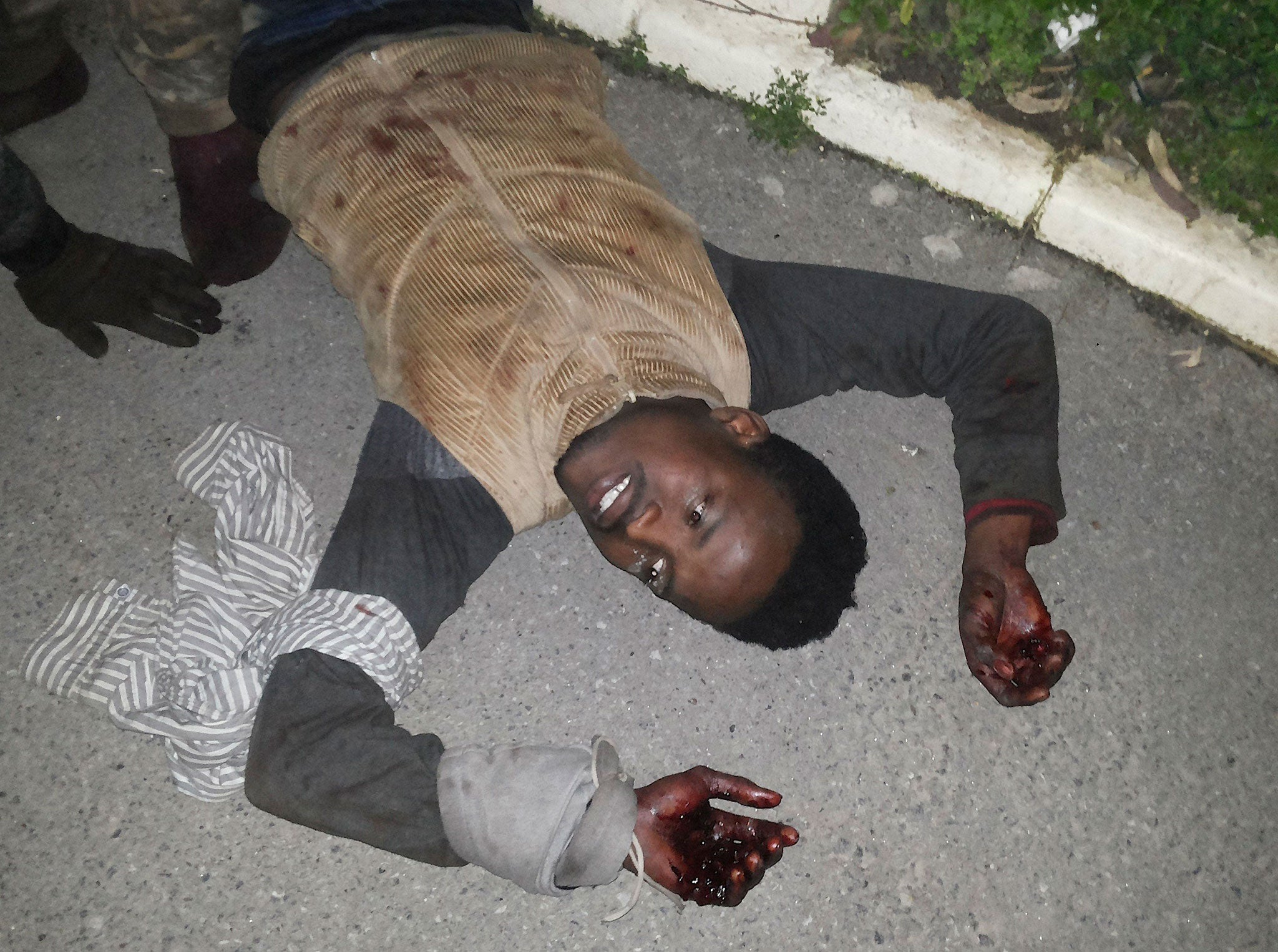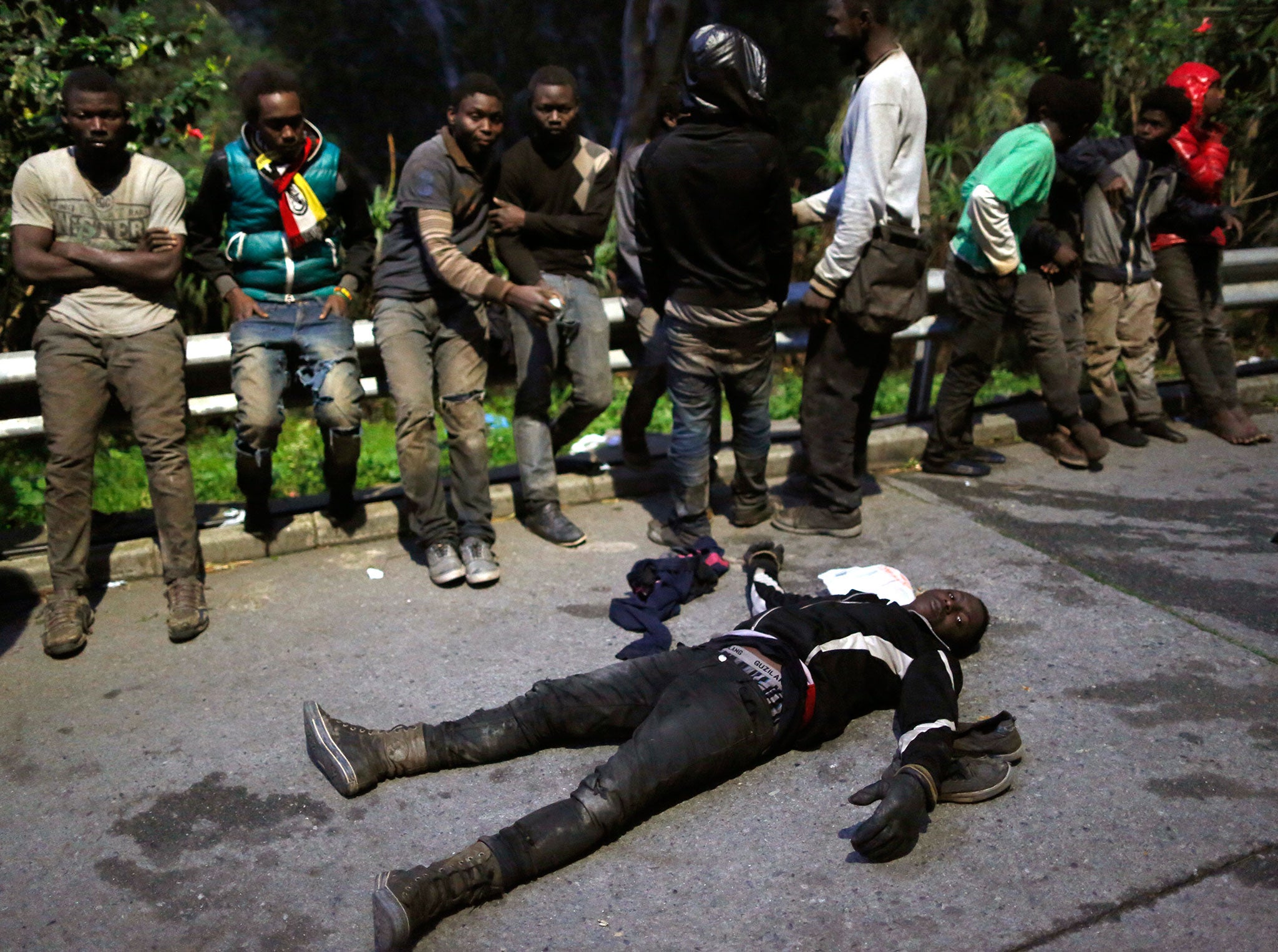Hundreds of migrants scale 20ft fence into Spanish enclave of Ceuta as refugee route shifts
Mass influx comes as record number of asylum seekers die attempting boat crossing to Spain

Your support helps us to tell the story
From reproductive rights to climate change to Big Tech, The Independent is on the ground when the story is developing. Whether it's investigating the financials of Elon Musk's pro-Trump PAC or producing our latest documentary, 'The A Word', which shines a light on the American women fighting for reproductive rights, we know how important it is to parse out the facts from the messaging.
At such a critical moment in US history, we need reporters on the ground. Your donation allows us to keep sending journalists to speak to both sides of the story.
The Independent is trusted by Americans across the entire political spectrum. And unlike many other quality news outlets, we choose not to lock Americans out of our reporting and analysis with paywalls. We believe quality journalism should be available to everyone, paid for by those who can afford it.
Your support makes all the difference.Almost 500 migrants and refugees have broken through a 20ft fence surrounding a Spanish enclave on the North African coast in desperate attempts to reach Europe.
Many needed medical treatment after scaling the barbed wire fence separating Ceuta from Morocco, with several bleeding from their hands and legs while others were injured falling to the ground.
Those who landed unscathed were triumphant, running through the streets draped in Spanish and EU flags shouting “freedom” before being rounded up by riot police to be taken to detention centres.

It came as a record number of refugees attempt to cross the Mediterranean between Morocco and Spain, with more drowning than ever before following efforts to close the crossing from Turkey to Greece.
Ceuta’s regional government said the incident was the biggest mass border crossing in recent years, with around 700 migrants joining attempts early on Friday morning to scale or break through metal barriers with tools and clubs.
At least 498 people succeeded, with two taken to hospital and 11 Spanish police and 10 members of Morocco’s armed forces injured in clashes near Tarajal.
More than 30 migrants were treated for bone fractures and other injuries, the Red Cross said, while local television footage showed people with blood on their faces and hands, or lying in the road.
The mostly sub-Saharan African migrants are among hundreds stranded in Morocco in attempts to cross the Mediterranean to Europe, or enter Spain via Ceutra and its eastern enclave of Melilla by jumping fences or swimming along the coast.
Many will be returned to their home countries or let go, while others will apply for asylum in Spain and be transferred to the mainland.

At least 55 of Friday’s arrivals were rejected immediately, according to the Civil Guard, because those who are intercepted on the spot can be returned to Morocco in “push back” operations condemned by the United Nations as a violation of international law.
Humanitarian agencies have raised concerns about conditions at the already overcrowded reception centre in Ceuta, where authorities have put military tents in car parks in efforts to house hundreds of asylum seekers.
Maria Vega, from the UN Refugee Agency (UNHCR), said Spanish authorities must properly assess asylum claims before returning people to Morocco and transfer refugees to the mainland as soon as possible.
“These transit centres are above their capacity and they are not an appropriate place for housing refugees, families and victims of trafficking,” she told The Independent.
“Women and children are sleeping in one side, with their husbands and male relatives forced into another place.”
Miss Vega said the poorest and most desperate migrants resort to climbing the fences, while others pay smugglers to board rickety and overcrowded boats from Morocco to Spain across the Strait of Gibraltar.
“In 2016 there were around 1,000 people entering through the fences in the entire year,” she added.
“These numbers are not normal and any people are waiting on the other side of the fence trying to reach Europe.”
Security forces frequently prevent anyone of sub-Saharan African appearance approaching Spanish border posts where they can apply for asylum, leading them to cross illegally, Miss Vega said.
Meanwhile, a record 1,200 refugees have reached the Andalusian coast by sea so far this year – a 200 per cent increase on the same period in 2016.
At least 30 people have drowned or gone missing in the past six weeks, including a six-year-old boy found washed up dead on a Spanish beach, almost half of the death toll for the entire last year.
Miss Vega said the UN was concerned about the rocketing death rate, coming after a record year that saw more than 5,000 refugees drown, suffocate or die of hypothermia attempting to reach Europe by sea.
“We appreciate that there are search and rescue actions being taken to save lives by governments and NGOs but what we really need is legal avenues,” she added.
“People should be coming to countries with papers and a visa and not risking their lives, because they have already suffered.
“They’re escaping political, ethnic, religious and gender persecution, bombing and poverty, then they have to suffer another hell trying to reach safety.
“Traffickers and smugglers – those are the ones that are getting money out of this situation.”
Many migrants documented by the UNHCR reaching Spain’s North African enclaves are from sub-Saharan African nations including Nigeria, Guinea and Senegal, although a high number of asylum seekers reaching Melilla are Syrian.
Miss Vega said some families said they journeyed from Libya due to the lawless country’s ongoing civil war and the threat of kidnap and extortion, while news of boats launched from the country sinking may also be driving the trend.
The treacherous crossing between Libya and Italy has become the main refugee route to Europe since the controversial EU-Turkey deal aimed to close the comparatively shorter and safer journey over the Aegean Sea to Greece.
An estimated 100,000 foreign migrants and 250,000 internally displaced people remain in Libya, where a fragile government is failing to stop a bloody competition of control between countless warring militant groups including Isis.
More than 12,300 asylum seekers have reached Europe by sea so far this year, mostly from Syria, Afghanistan, Nigeria, Iraq and Eritrea.
Subscribe to Independent Premium to bookmark this article
Want to bookmark your favourite articles and stories to read or reference later? Start your Independent Premium subscription today.
Join our commenting forum
Join thought-provoking conversations, follow other Independent readers and see their replies
Comments